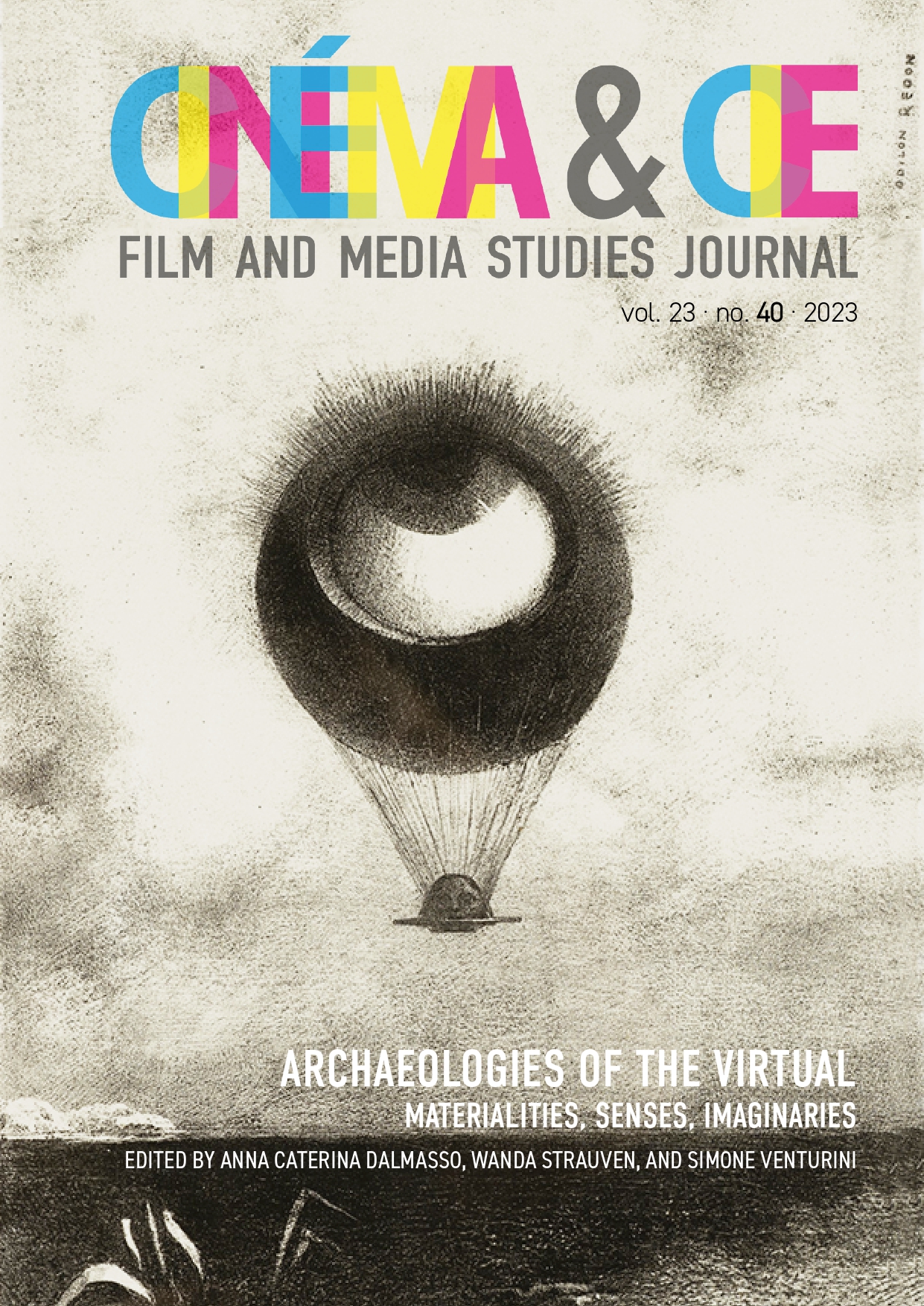Spot the Fire, Amuse the Alpinist. The Toposcope, an in situ Panoramic Device (1790–1910)
DOI:
https://doi.org/10.54103/2036-461X/19380Keywords:
Media Archaeology, Toposcope, Panoramic Gaze, In situ Virtuality, Augmented RealityAbstract
Initially designed at the end of the 18th century to identify the exact location of a fire during the dark hours of the night, the toposcope became in the following decades a tourist attraction device. Thanks most of all to the work of Alpine and Touring Clubs, the presence of these instruments spread throughout Europe under many names (Toposkop, Indicateur des Alpes, Table d’orientation). Alpine regions have been their crib, but they rapidly reached other environments. Wherever there was a good 360° vision of the surroundings, a toposcope could be placed. They constitute a universe that is as connected as varied. The deep time of their technology and their applicative variations also testify a migratory path which resembles many other panoramic devices. The article aims therefore to media-archaeologically trace the major dynamics of the toposcope. Not to uniform them under a homogeneous history, but to reflect upon its role in defining the modern meanings of mobility and virtuality. In that, the toposcope represents an interesting point of view since, unlike many other panoramic devices, it provides for an in situ mediated experience. Sharing some features with Augmented Reality, the toposcope elaborates a different approach to optical immersive experience.
References
“Das Toposkop des Hrn. Ludwig Meyer in Luzern.” 1852. Polytechnischen Journals 125: 75.
“Indicateur des Alpes.” 1882. La Suisse libérale 19 (90): 3.
L’observatoire panoramique de la Basilique de Fourvière. 1896. Lyon: De Vitte.
“Speciali deliberazioni della Direzione Centrale.” 1878. Bollettino del Club Alpino Italiano 33: 9–10.
Vienna, guida illustrata della città e suoi dintorni. 1873. Milano: Giovanni Gnocchi, Edoardo Sonzogno.
Anot, H. 1895. “Les tables d’orientation en France.” La nature 23: 126.
Bachmann, Christian. 1991. Sicherheit. Ein Urbedürfnis als Herausforderung für die Technik. Basel: Springer.
Berger, John. 1972. Ways of Seeing: Based on the BBC Television Series with John Berger. Harmondswoth: Penguin Books.
Berthelot, André. 1901. “Tables d’orientation.” Revue mensuelle du Touring-Club de France 10 (10): 439.
Carmignani, Julie, and Furht, Borko. 2011. “Augmented Reality: An Overview.” In Handbook of Augmented Reality, edited by Borko Furht, 3–46. New York: Springer.
Castro, Teresa. 2011. La pensée cartographique des images. Cinéma et culture visuelle. Lyon: Aléas.
Chan, Melanie. 2014. Virtual Reality: Representations in Contemporary Media. New York: Bloomsbury.
Crary, Jonathan. 1990. Techniques of the Observer: On Vision and Modernity in the Nineteenth Century. Cambridge, MA: MIT Press.
Eydoux. 1905. “Construction d’une Table d’orientation à l’aide de Photographies panoramiques.” Photo-revue 27: 84–87.
Fournier, Charles Alban. 1895. “Les tables d’orientation en France.” La Nature 23: 170.
Friedberg, Anne. 1993. Window Shopping: Cinema and the Postmodern. Berkeley: University of California Press.
Glangeaud, Philippe. 1912. “Les tables d’orientation et l’éducation géographique du public.” La Géographie 25: 251–56.
Huhtamo, Erkki. 2013. Illusions in Motion: Media Archaeology of the Moving Panorama and Related Spectacles. Cambridge, MA: MIT Press.
Huysbenz, Max. 1879. Geschichte und Entwickelung des Feuerlöschwesens der Stadt. Wien: A. Hartleben.
Kaplan, Caren. 2018. Aerial Aftermaths: Wartime From Above. Durham: Duke University Press.
Kittler, Friedrich A. 1985. Aufschreibesysteme 1800/1900. München: Wilhelm Fink Verlag.
Krügelstein, J. F. 1799. Vollständiges System der Feuerpolizeiwissenschaft. Leipzig: Boß und Co. Kurgan, Laura. 2013. Close Up at a Distance: Mapping, Technology, and Politics. New York: Zone Books.
Lacker, René. 1895. “L’indicateur des Alpes.” La Nature 23: 101–02.
Oettermann, Stephen. 1980. Das Panorama: Die Geschichte eines Massenmediums. Frankfurt am Main: Syndikat.
Parikka, Jussi. 2015. A Geology of Media. Minneapolis: University of Minnesota Press.
Pinotti, Andrea. 2021. Alla soglia dell’immagine: Da Narciso alla realtà virtuale. Torino: Einaudi.
Schlinke L. 1853. Der Rigi. Handbüchlein für Reisende. Luzern: Kaiser’sche Buchhandlung.
Schwilgué, Charles. 1857. Notice sur la vie, les travaux et les ouvrages de mon père J. B. Schwilgué. Strasbourg: Silbermann.
Tschudi, Iwan Von. 1899. Der Tourist in der Schweiz und den Grenzrayons. Zürich: Füssli.
Voigt, Friedrich W. 1803. Das Toposcop oder der sogenannte Pyrotelegraph: Einige Worte über dessen
Erfindung, Verbesserung und Gebrauch, vorzüglich aber über den deshalb geführten Streit zwischen Hrn. Fricke und Dr. Pansner. Leipzig: August Schumann.
Zielinski, Siegfried. 2002. Archäologie der Medien: Zur Tiefenzeit des technischen Hörens und Sehens. Reinbek bei Hamburg: Rowohlt Taschenbuch Verlag.
Zielinski, Siegfried. 2019. Variations on Media Thinking. Minneapolis: University of Minnesota Press.
Downloads
Published
How to Cite
Issue
Section
License
Copyright (c) 2023 Matteo Citrini

This work is licensed under a Creative Commons Attribution 4.0 International License.





